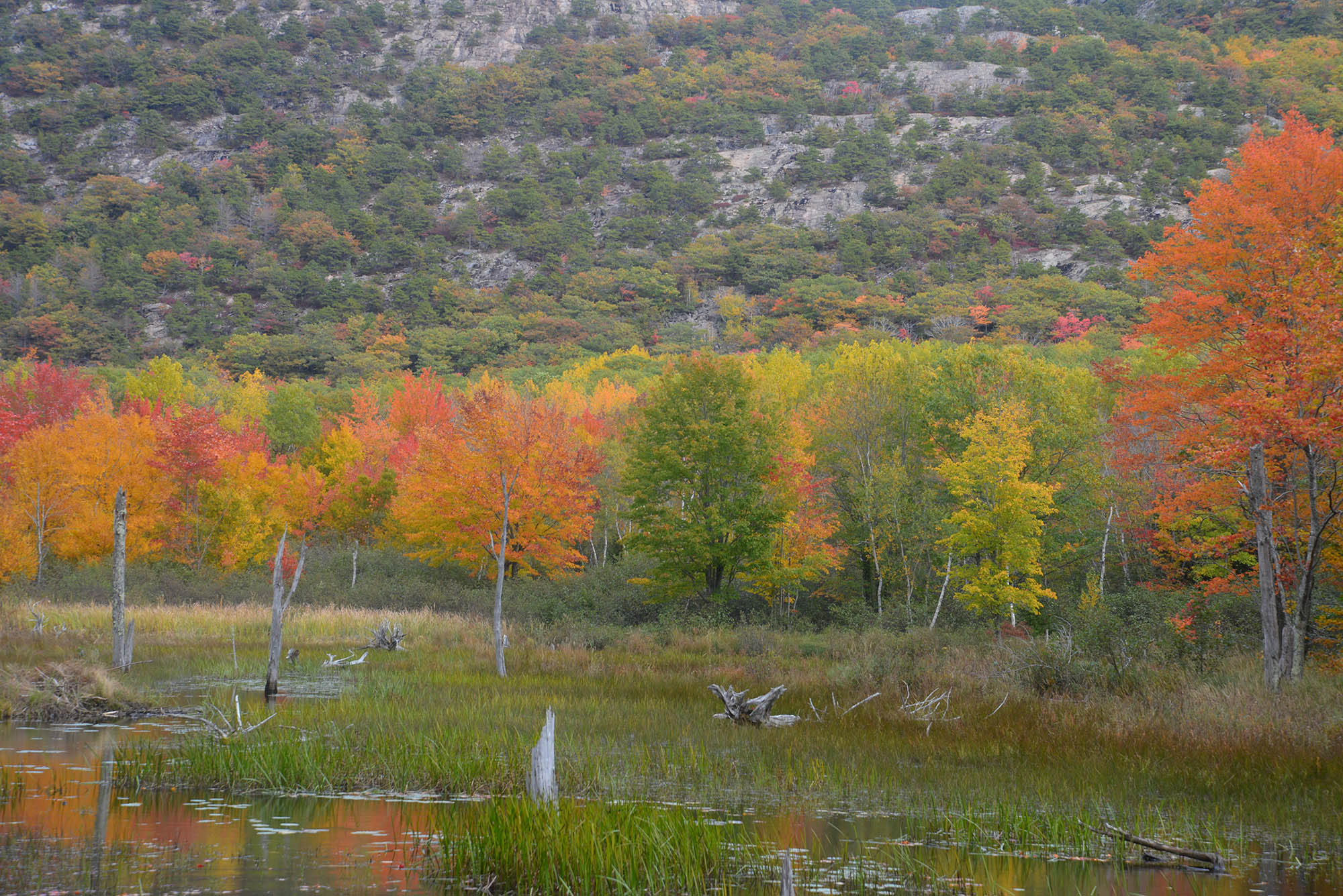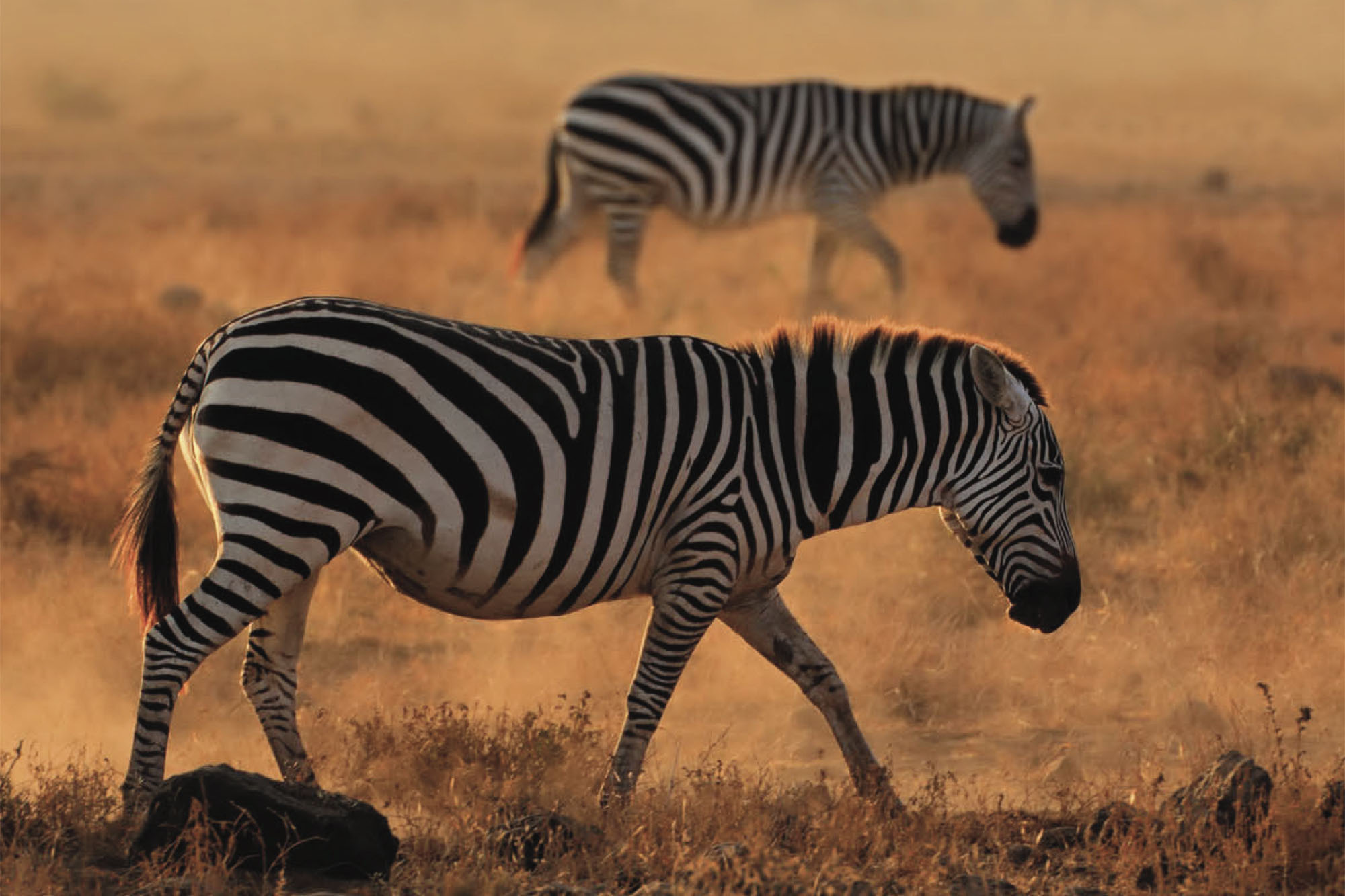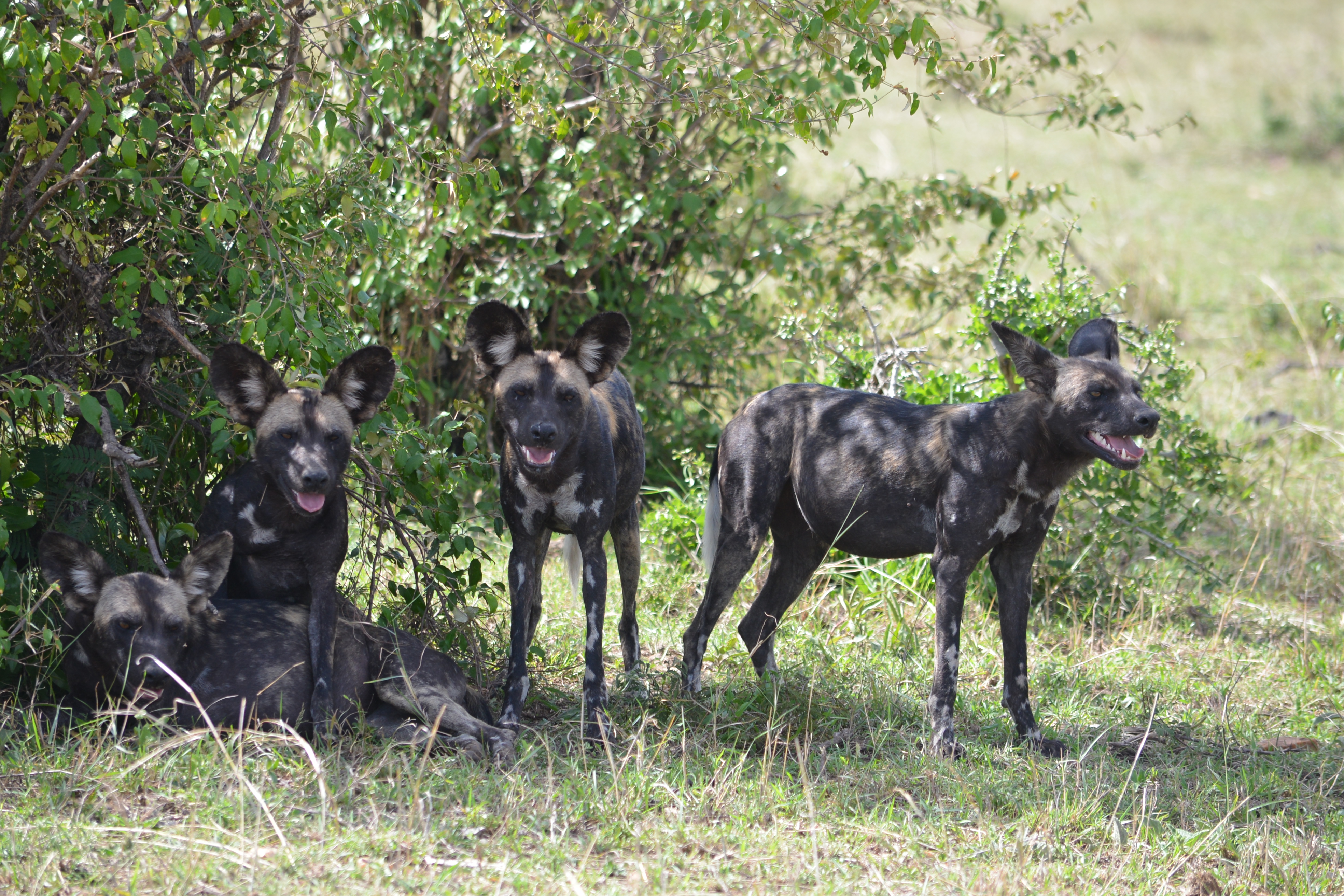The Myth of the Squirrel: Awakening People to the Grassland Heritage of America’s Southeast
When most people think of American grasslands, they imagine the vast open prairies of the Great Plains. Few recognize that some of the most varied and important grassland habitat actually occurred in the Southeast. Contrary to popular lore, the Southeast was not an unbroken forest stretching from the Atlantic coast to the Mississippi River. Rather it included a stunning and biodiverse mosaic of grassland types, including savannas, balds, glades, fens, marshes, bogs and even prairie.
These Southeast grasslands have lost nearly 90% of their original extent. Conserving and restoring what remains is the mission of the Southeastern Grasslands Initiative, a BAND grantee. Grasslands are one of the world’s most threatened ecosystems yet are often overlooked as a critical reservoir of biodiversity, a vital carbon sink and an essential resource for local and indigenous communities. BAND also supports grasslands conservation in Kenya, Tanzania and Mongolia.
Video Showcases the Importance of the Maasai Mara’s Wildlife Conservancies
The Maasai Mara ecosystem is one of the world’s most important conservation landscapes. It is also home to the Maasai people whose pastoralist traditions have allowed wildlife to coexist with humans and livestock for centuries. Today, this ecosystem is severely threatened by expanding agricultural production; by subdivision and fencing; and by increasingly unpredictable climate patterns. A key solution is the development of wildlife conservancies.
Conservancies consist of hundreds of individually owned parcels of land pooled together and leased out to tourism operators. Landowners receive direct payments for renting their land while retaining the right to graze their livestock. As such, conservancies provide a unique platform for unlocking economic value for local communities. Likewise, conservancies offer tremendous hope for maintaining and restoring critical habitat outside of national protected areas, many of which are simply too small or isolated to provide a sustainable future for wildlife.
The Maasai Mara Wildlife Conservancies Association is the umbrella organization for the Mara’s 15 wildlife conservancies and an important recipient of BAND Foundation support.
Video Highlights How Community-Managed Wildlife Areas In Tanzania Serve as Grass Banks for Local Communities
Grazing is the lifeblood of Maasai culture in northern Tanzania, and its currency is grass. Population pressure, agricultural expansion, infrastructure development and land subdivision are placing enormous pressure on savanna grassland resources in this landscape. Likewise, these same threats are endangering the region’s wildlife, which require access to community lands as critical migratory corridors and dispersal areas linked to their strongholds in iconic national parks like Tarangire and Lake Manyara.
Wildlife Management Areas (WMAs) are communal lands, frequently bordering national parks, that serve as grass banks for both livestock and wildlife. With BAND Foundation support, Honeyguide is working to ensure that these areas fulfill their promise to benefit both people and nature.
Video Highlights bioGraphic’s Solutions-based Approach to Conservation Journalism
Media coverage of the biodiversity crisis too frequently lends itself to apocalyptic headlines and a sense of hopelessness. In turn, this can cause people to tune out and feel as though nothing can be done to stem nature’s decline. It also shortchanges the countless individuals and institutions successfully working to save species, restore ecosystems and pioneer new conservation models.
BioGraphic – a free, nonprofit, independent, online journal powered by the California Academy of Sciences – delivers high-quality scientific reporting on the most promising conservation solutions from around the world. The BAND Foundation provides funding to bioGraphic to enable expanded coverage and increased reach.
Acadia National Park’s Climate Adaptation Model Featured in New Protected Areas Journal

The climate crisis is magnifying the ecological stresses affecting the world’s natural landscapes and biodiversity, forcing the development of new conservation models that promote resilience and allow for adaption. Acadia National Park, one of the crown jewels of America’s national parks system, is implementing a partnership-based, whole-watershed approach to respond to this challenge. This work is featured in the inaugural edition of Parks Stewardship Forum, a new journal dedicated to the stewardship of parks, protected areas, cultural sites and other forms of place-based conservation. As the paper’s authors note:
“Over the past five years, park staff and partners have begun taking an interdisciplinary, partnership-based approach to assessing baseline conditions, identifying stresses, developing climate change scenarios, and restoring the ecological and cultural integrity and resilience of whole watersheds… We recognized that the ‘stovepiped’ and project-based structure of park resource management – in which different disciplines such as wildlife, vegetation, and water functioned more or less independently and focused on individual projects rather than more holistic and forward-looking goals – was not adequate in a rapidly changing environment.”
Funded in part through a BAND Foundation grant to Friends of Acadia, (the park’s non-profit partner), this innovative public/private partnership also involves key stakeholders from the local community, including the Town of Bar Harbor, College of the Atlantic and others.
Sea Star Wasting Disease and the Growing Threat of Wildlife Pathogens
Several years ago, a mysterious disease started to appear in sea stars all along the Pacific coast of North America, rapidly and simultaneously decimating well-known species such as the sunflower and ochre stars. Sea stars are keystone predators vital to the health and productivity of intertidal zones. The affliction, known as sea star wasting disease (SSWD), can kill an otherwise healthy sea star in a matter of days, ultimately by causing the animal’s body structure to break down and collapse.
SSWD is one of a number of emergent diseases wreaking havoc on wildlife globally yet generating relatively little public attention and concern. Partly this is because many of the species most severely impacted – including amphibians, reptiles, freshwater mussels and bats – are frequently overlooked despite the essential ecological roles they play. Additionally, while there are clear policy and funding frameworks to address the detection, treatment and prevention of diseases that directly affect people and livestock, little corresponding infrastructure exists for wildlife disease. This is particularly problematic given the speed with which many of these pathogens are spreading.
The growing wildlife disease threat has primarily human origins. The global movement of people and goods, including the wild animal trade (both legal and illegal), facilitates the spread of disease across countries and continents while the climate crisis is allowing diseases to emerge and thrive where they previously could not.
Funding is urgently required to address this growing problem. Needs include critical scientific research on known diseases; the capacity to better predict, detect and respond rapidly to outbreaks; the ability to educate the public on steps people can take to reduce disease spread; and key policy changes to help prevent the movement of disease across borders.
The BAND Foundation has funded projects targeting particular diseases (including SSWD, white-nose syndrome in bats and another deadly fungal pathogen in salamanders) while highlighting the broader threat wildlife disease poses to biodiversity and human well-being. Most recently, we supported PRIMED – Primary Responders in Marine Emergent Diseases – a collaborative monitoring and response network on the Pacific coast.
Critical Role of Kenyan Wildlife Conservancies Featured in Two New Reports

Kenya has lost more than half its wildlife over the past three decades. Most of those losses have occurred outside of national protected areas. Two new reports from the World Bank and PERC single out the potential of wildlife conservancies to reverse this trend while also generating meaningful economic benefits for local people. Wildlife conservancies are lands designated by individual landowners, groups of landowners or communities to be managed for wildlife conservation and other compatible uses. Economic benefits from conservancies can accrue through tourism, sustainable livestock enterprise, carbon offsets and other means. As a recognized land use under Kenya’s Wildlife Act of 2013, conservancies offer improved land and resource rights as well as access to incentives. As the World Bank report notes:
“Conservancies could play a crucial role in halting the collapse of wildlife in Kenya by extending the areas under protection around parks, reconnecting habitats, and limiting overcrowding in parks. And more than that, conservancies offer levers to boost and diversify economic activities in some of the most remote parts of the country. In places where ranching and agriculture are under stress due to shifting weather patterns, land degradation, or overstocking, conservancies offer more sustainable livelihood options that will inevitably increase in value as wildlife numbers and wilderness viewing opportunities shrink across the globe.”
The BAND Foundation provides funding to strengthen conservancies in the Maasai Mara region through the Maasai Mara Wildlife Conservancies Association and to support the conservancy movement nationally through the Kenya Wildlife Conservancies Association.
The Guardian Launches “The Age of Extinction”
The Guardian today launched The Age of Extinction, a major multi-media reporting initiative to substantially expand global coverage of species loss and related ecological destruction. A key feature of the series will be to explore the most promising solutions for halting these alarming trends. Support for this ambitious effort is being provided by the BAND and Wyss Foundations through theguardian.org. The series will run through December 2020 when governments will convene to seek consensus on increased measures to protect biodiversity.
The Age of Extinction comes on the heels of a comprehensive UN report warning that the rapid deterioration of the natural world imperils the conditions necessary for human existence and well-being. These include our ability to produce food, energy and medicines and to derive cultural, spiritual and other non-material benefits essential to our quality of life. Among the report’s critical findings is that more than one million species are at grave risk of extinction.
“We are rapidly diminishing nature’s ability to sustain and inspire us,” said Nick Lapham, President of the BAND Foundation. “The Guardian is the global leader in environmental reporting and offers the perfect platform to bring a new level of attention, depth and consistency to coverage of these urgent issues. By explaining the threats we face and profiling the people, organizations and ideas that can lead us out of this crisis, we hope The Age of Extinction will empower policy makers and other key stakeholders to take the bold actions needed to help nature recover and thrive.”
New Video Highlights “Extreme Botany” in Service of Saving Critically Endangered Plants
While the term “endangered species” conjures images of rhinos, elephants and great apes, plants are undergoing their own extinction crisis, especially on islands where range-restricted species are under siege from introduced mammals, habitat conversion, climate change and other factors. We still know relatively little about these island plants, including their evolutionary histories, unique chemical properties and interrelationships with local insects and other species.
Perhaps nowhere is the plant extinction crisis more acute than Hawaii where 45% of all plants listed under the Endangered Species Act are found. Fortunately, Hawaii is also the site of one of the world’s most audacious and effective plant conservation programs. The Plant Extinction Prevention Program (PEPP), a BAND grantee, is dedicated to keeping endangered plants—those with 50 or fewer individuals left—from being lost forever. Before PEPP’s establishment in 2003, Hawaii was averaging one plant extinction per year. PEPP’s field botanists have reduced that number to zero, but their work is now under threat from federal funding cuts. Keeping Hawaii’s and other plant species alive is going to require broader public awareness and support for the importance of plants and the work of PEPP and others who dedicate their lives to safeguarding botanic diversity.
Mara Predator Conservation Program Discovers Rare Wild Dog Den Site

Researchers with the BAND-funded Mara Predator Conservation Program (MPCP) have recently discovered an active den of highly endangered wild dogs just inside the northern boundary of Mara North Conservancy. The conservancy is an innovative partnership through which local landowners pool and lease their land to tourism operators in exchange for receiving regular payments and retaining the right to graze their livestock.
The pack’s den is very close to the conservancy border in an area threatened by fencing and agricultural conversion. MPCP is working with the Maasai Mara Wildlife Conservancies Association and other partners to engage local communities in developing strategies for safeguarding key habitat corridors and reducing human/wildlife conflict. A number of local Maasai landowners recently agreed to remove fencing around their properties, a critical move for the future of wild dogs and other species in this high priority conservation landscape.
As seen below, there appear to be nine young pups at the site. Wild dogs have long been persecuted across their range for predating on livestock and are also highly vulnerable to canine distemper and other diseases. Their presence here is testament to the critical importance of mixed use landscapes outside national parks and protected areas, and their persistence on such landscapes depends entirely on community tolerance. MPCP is urgently working to raise funds to assist in monitoring these dogs and in implementing measures to reduce the risk to local livestock.


